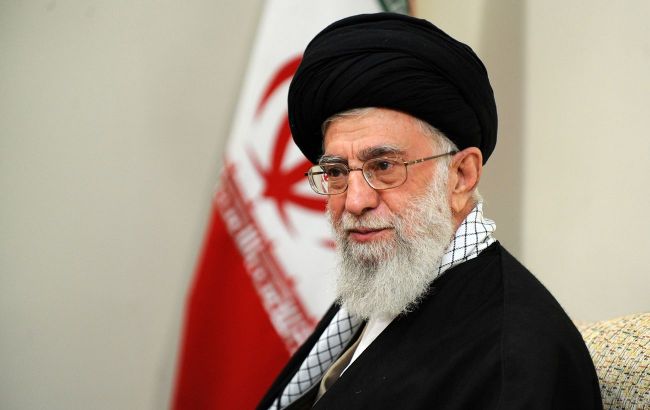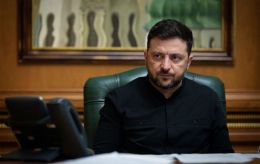Iran's presidential election: Key facts and expected consequences
 Iran's Supreme Leader Ali Khamenei will lead the country regardless of the outcome of the presidential election (photo: Getty Images)
Iran's Supreme Leader Ali Khamenei will lead the country regardless of the outcome of the presidential election (photo: Getty Images)
Iran will hold an early presidential election on June 28. The country's previous president, Ebrahim Raisi, died in a plane crash on May 20. More about the main candidates and what can change in the country, which is one of the main suppliers of weapons to Russia - in the RBC-Ukraine article.
Contents
- Main candidates
- How election campaign is going
- How candidates are fighting for voters
- Powers of the Iranian president
- What may change in Iran with a new president
Main candidates
A total of 80 candidates applied to run in the election. Among them are former President Mahmoud Ahmadinejad, several ministers, and MPs. However, almost all of them did not pass the preliminary selection.
The Guardian Council selected only 6 candidates to run in the election. Among them are three key ones: Speaker of the Majles (Iranian Parliament) Mohammad Bagher Ghalibaf, representative of the spiritual leader (de facto leader of the country) in the Iranian Security Council Saeed Jalili, who are conservatives and liberal MP Masoud Pezeshkian.
Mohammad Bagher Ghalibaf adheres to the principles of conservatism but also knows what pragmatism is. He managed to get the support of independent candidates and liberals in the new Majles to take the speaker's chair. He voices the need to introduce moderate changes in the system of government and society.
Saeed Jalili supports the most conservative course and a hard line in the public sphere. He is also close to the supreme leader. In his election slogans, he pays special attention to solving the "women's issue" by strengthening the role of Islam in public life.
Finally, Masoud Pezeshkian is the most liberal of the three favorites. He is a cardiac surgeon by profession. For many years he was a member of the Majles, but until recently he was little known to the general public. Pezeshkian's name has not been involved in any corruption or political scandals.
How election campaign is going
The Middle East Eye, citing its sources among the conservative establishment, points out that the admission of a mediocre liberal to the election is a purely campaign thing. The main goal of this step is to increase voter turnout while not jeopardizing conservative candidates.
The Iranian establishment is seriously concerned about the turnout, as it could threaten the legitimacy of the president. The first sign has already surfaced at the parliamentary elections in March of this year, when only 41% came to vote.
According to a GAAMAN Center poll conducted 10 days before the election, 22% of Iranians will vote for sure, about 12% are still undecided, and 65% said they would not vote at all. The main reason for such passivity is that Iranians do not believe that anything can be changed through elections.
But even among those who will go to the polls, Masoud Pezeshkian is in the lead with 37%. His closest rival, Jalili, has the support of 29.4% of voters. In turn, Mohammad Bagher Ghalibaf can count on 8.3% of the vote. But 18.4% of those who will vote have not yet decided.
So the intrigue remains. During the previous presidential campaigns in Iran, there were cases of candidates withdrawing themselves the day before the vote and sharp changes in voter sentiment. Even a slight fluctuation in turnout could also affect the situation. Besides, Jalili's agreements with Ghalibaf are possible. These two candidates play on the same electoral field.
How candidates are fighting for voters
Saeed Jalili and Mohammad Bagher Ghalibaf rely on traditional election strategies, campaigning among the predominantly conservative population.
Masoud Pezeshkian is still trying to unite the liberal population around him. He has recruited other reputable reformist politicians to his team. For example, the media component of his campaign is overseen by former Minister of Communications Mohammad-Javad Azari Jahromi. Another prominent figure, former Foreign Minister Mohammad Javad Zarif, who was once in charge of the nuclear deal, has become a foreign policy adviser.

Masoud Pezeshkian (photo: Getty Images)
Separately, Pezeshkian's team works with the Kurdish and Azerbaijani minorities, as he is Azerbaijani by nationality and was born in the Kurdish city of Mahabad. Together, these two groups make up 15% of Iran's population.
Powers of the Iranian president
The Islamic Republic of Iran has a unique model of state power. The president is number two and has similar powers to prime ministers in parliamentary democracies. The real head of state is the spiritual leader (Rahbar), who has been Ali Khamenei since 1989. The Supreme Leader determines the strategy of state policy in key areas, while the president takes care of the tactics of achieving strategic goals.
Presidential elections are competitive, although they involve the pre-selection of candidates by the Guardian Council. This is a separate body consisting of six clerics and six civilian lawyers. The Guardian Council does not explain its decisions, but it takes into account the qualifications of candidates, their experience, and loyalty to the current government.
There are no classic political parties in Iran. Instead, there are several informal political movements, ranging from Islamic "conservatives" to "liberals" who are committed to reform, but of course within the current system.
There have been cases when liberals have become presidents and ministers. The last time was in 2013-2021 when Hassan Rouhani held this position. However, the last presidential election was won by a representative of the conservatives, the deceased Ebrahim Raisi.
What may change in Iran with a new president
The candidates spoke about their views on foreign policy during the debate on June 24.
All three key candidates promised to achieve the lifting of Western sanctions against Iran but expressed different attitudes toward this issue.
Saeed Jalili proposes to "make the enemy regret the sanctions against Iran" through economic means. He also plans to strengthen economic ties with Latin America and African states to reduce the impact of sanctions.
Mohammad Bagher Ghalibaf said he would "definitely negotiate and reach an agreement" to restore the nuclear deal with world powers, from which President Donald Trump withdrew the United States in 2018. However, during his presidency, Iran will act gradually, "taking step by step."
Masoud Pezeshkian emphasizes the need to bring Iran out of international isolation. Criticizing the current foreign policy approaches, he stated that he "will not allow grandiose slogans in foreign policy to empty people's pockets."
At least two of the three candidates speak of the need for rapprochement with the West. Yet, whoever becomes president of Iran will have limited opportunities to influence the country's policy. The general trend of Iran's rapprochement with China and Russia in the Iranian establishment remains unchanged.
Sources: Middle East Eye, opinion polls by GAAMAN Center, and statements by Iranian presidential candidates from open sources.

